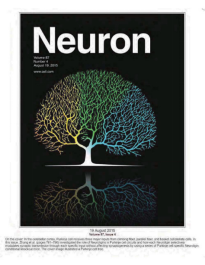
Zhang, Bo
张勃
Institute of Neurological and Psychiatric Disorders
Timeline
-
2019 - Present
Shenzhen Bay Laboratory Junior Principal Investigator
-
2019 - Present
Peking University Shenzhen Graduate School Principle Investigator
-
2017 - 2018
Stanford University Basic Research Scientist
-
2011 - 2017
Stanford University & HHMI (Postdoc) Research Associate
-
2011
Peking University PhD
-
2001 - 2005
MinZu University of China B.S.
Research Areas
The human brain consists of more than 100 billion neurons, which process and transmits information at specialized junctions called synapses. Our laboratory is interested in understanding the molecular basis of the formation and function of synapses and exploring the mechanisms underlying the impairments in synaptic function that are observed in neurodevelopmental and neurodegenerative disorders. In pursuing those questions, our laboratory will utilize an interdisciplinary approach that spans from in vitro studies to animal behavior assessments and includes dual-patch recording in the acute slice, animal behavior, stereotaxic injection of virus for gene manipulation and for functional circuit tracing, optogenetics, molecules biology, mouse genetics.
Highlights
Bo Zhang is a Principle investigator in the Institute of neurological and neuropsychiatric disorders at Shenzhen Bay laboratory. His lab is interested in understanding the molecular basis of the formation and function of synapses and exploring the mechanisms underlying the impairments in synaptic function that are observed in neurodevelopmental and neurodegenerative disorders. He received his PhD in Physiology from the Peking University under the mentorship of Zhuan Zhou. After a postdoc training in Stanford University School of Medicine/Howard Hughes Medicine Institute with Thomas Südhof, he joined the faculty at the Peking University Shenzhen graduate school in January 2019. In March 2019, he joined Shenzhen Bay laboratory. His lab is currently supported by grants from Shenzhen-Hong Kong Institute of Brain Science (2019), the General Project of Guangdong Natural Science Foundation (2019), the General Program of NSFC (2021-2014), and NSFC Excellent Young Scholars Fund (2021-2023).

In the cerebellar cortex, Purkinje cell receives three major inputs from climbing fiber, parallel fiber, and basket cell/stellate cells. Zhang et al. investigated the role of autism-associated Neuroligins in Purkinje cell circuits and how each Neuroligin selectively modulates synaptic transmission through each specific input without affecting synaptogenesis by using a series of Purkinje cell-specific Neuroligin conditional knockout mice.
Honors
• 2019 Peacock Program for Overseas High-Level Talents
• 2019 Guangdong Pearl River Talent Program (Overseas Top Young Talent)
• 2020 NSFC Excellent Young Scholars Fund
Selected Publications
(* first author; # Corresponding author)
1: Qin, L., Guo, S., Han, Y., Wang, X., Zhang, B#. (2020) Functional mosaic organization of neuroligins in neuronal circuits. Cellular and Molecular Life Sciences. 77, 3117-3127
2: Zhang, B.#, Gokce, O., Hale, D., Brose, N., Südhof, TC. (2018) Autism-associated Neuroligin-4 mutation selectively impairs glycinergic synaptic transmission in mouse brainstem synapses. Journal of Experimental Medicine. 215 (6): 1543-1553.
3: Zhang, B.#, Seigneur, E., Wei, P., Gokce, O., Morgan, J., Südhof, TC. (2017) Developmental plasticity shapes synaptic phenotypes of autism-associated neuroligin-3 mutations in the calyx of Held. Molecular Psychiatry. 22, 1483–1491. 
4: Zhang, B.#, Südhof, TC. (2016). Neuroligins are selectively essential for NMDA-receptor signaling in cerebellar stellate interneurons. J. Neurosci. 36(35):9070-9083. (Highlighted in J. Neurosci;  )
)
5: Zhang, B.*, Chen, L.*, Maxeiner, S., Lee, S., Gokce, O., Südhof, TC#. (2015) Neuroligins Sculpt Cerebellar Purkinje-Cell Circuits by Differential Control of Distinct Classes of Synapses. Neuron. 87(4):781-96. (Cover Story)












